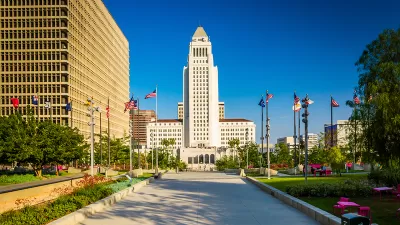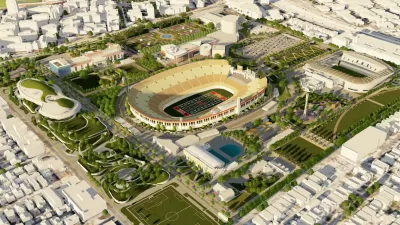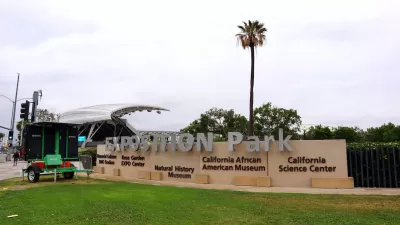A pointed editorial decries the over-regulation that has followed the renaissance of public spaces in Los Angeles.

"In recent years, Los Angeles has invested mightily in its public spaces in efforts to create a 'world class city,'" according to an op-ed by Laura Barraclough. "Great Streets Initiative, to the pop-up parklets and plazas being created along the L.A. River and all around the city, a certain energy around a revitalized public sphere pervades the air," adds Barraclough.
Despite these high profile efforts, however, Barraclough sees reasons to wonder whether the city is living up to its potential—or its promises. She writes: "From the loudly-hyped debut of Grand Park, to Mayor Eric Garcetti's Great Streets Initiative, to the pop-up parklets and plazas being created along the L.A. River and all around the city, a certain energy around a revitalized public sphere pervades the air. Much has been made of the design element of this revitalization, which is crucial, but little has been said of its legal architecture: the hundreds of municipal codes that regulate the city’s public spaces, often in exclusionary ways."
Barraclough lists a surprising inventory of regulations of these spaces, made in the name of public safety. Nearby jurisdictions are just as likely to enact exclusionary regulations. A new dog park in Beverly Hills, for example, will only be open to the city's residents.
After listing several reasons why such regulations unfairly exclude populations that need the space the most, Barraclough goes on to cite Jane Jacobs and William Whyte in presenting a case for more democratic use of public spaces.
FULL STORY: If L.A. wants to be a world class city, it needs to stop micromanaging its public spaces

Study: Maui’s Plan to Convert Vacation Rentals to Long-Term Housing Could Cause Nearly $1 Billion Economic Loss
The plan would reduce visitor accommodation by 25,% resulting in 1,900 jobs lost.

North Texas Transit Leaders Tout Benefits of TOD for Growing Region
At a summit focused on transit-oriented development, policymakers discussed how North Texas’ expanded light rail system can serve as a tool for economic growth.

Alabama: Trump Terminates Settlements for Black Communities Harmed By Raw Sewage
Trump deemed the landmark civil rights agreement “illegal DEI and environmental justice policy.”

How Community Science Connects People, Parks, and Biodiversity
Community science engages people of all backgrounds in documenting local biodiversity, strengthening connections to nature, and contributing to global efforts like the City Nature Challenge to build a more inclusive and resilient future.

Alabama: Trump Terminates Settlements for Black Communities Harmed By Raw Sewage
Trump deemed the landmark civil rights agreement “illegal DEI and environmental justice policy.”

Dear Tesla Driver: “It’s not You, It’s Him.”
Amidst a booming bumper sticker industry, one writer offers solace to those asking, “Does this car make me look fascist?”
Urban Design for Planners 1: Software Tools
This six-course series explores essential urban design concepts using open source software and equips planners with the tools they need to participate fully in the urban design process.
Planning for Universal Design
Learn the tools for implementing Universal Design in planning regulations.
City of Santa Clarita
Ascent Environmental
Institute for Housing and Urban Development Studies (IHS)
City of Grandview
Harvard GSD Executive Education
Toledo-Lucas County Plan Commissions
Salt Lake City
NYU Wagner Graduate School of Public Service





























